Links to external sources may no longer work as intended. The content may not represent the latest thinking in this area or the Society’s current position on the topic.
Developing new approaches for the single cell manipulations and experimentation
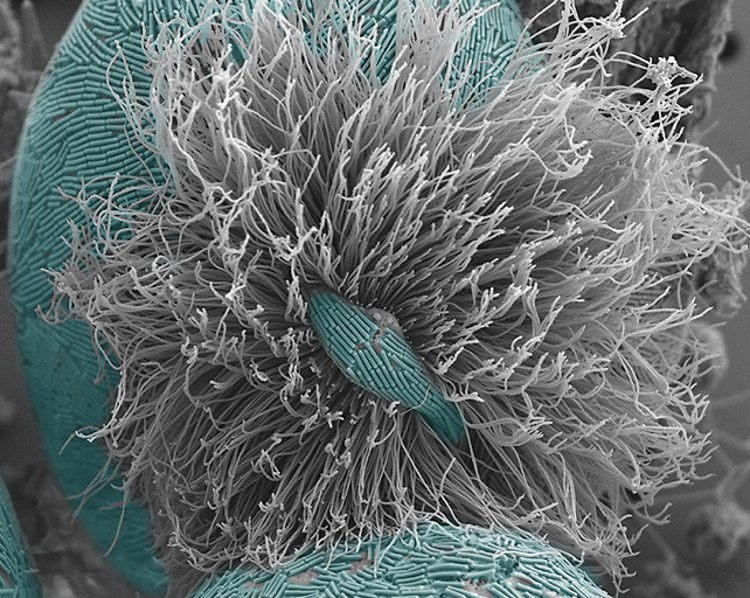
Satellite meeting organised by Professor Thomas Richards, Dr Ramon Massana and Professor Neil Hall
Single cell approaches are changing how we study many biological problems. This meeting will bring together biophysicists, molecular biologists and microbial ecologists who are using these technologies to understand the natural world. The aim of this satellite meeting is to report progress, identify areas for synergy and lay down the foundations for further developing this interdisciplinary science.
The speaker biographies and abstracts are below. Recorded audio of the presentations will be available on this page after the meeting has taken place.
Enquires: Contact the Scientific Programmes team.
Organisers
Schedule
Chair
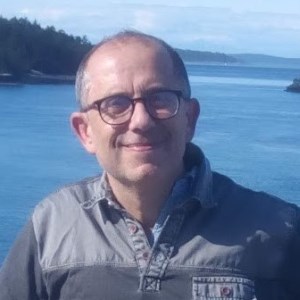
Dr Ramon Massana Institute of Marine Sciences, CSIC, Spain

Dr Ramon Massana Institute of Marine Sciences, CSIC, Spain
Ramon Massana is a Research Scientist at the ICM-CSIC with a wide experience in marine microbial ecology. His broad research line is the study of the phylogenetic and functional diversity of marine protists, especially those species that still remain uncultured. He conducts this exploration by applying simultaneously several tools, such as sequencing of environmental rDNA genes, metagenomics, single cell genomics, specific FISH counts and experiments. He is particularly interested in opening the black box of heterotrophic flagellates and exploring the role of these unpigmented protists in marine food webs as bacterial grazers and nutrient remineralisers. He is the coordinator of the EU Innovative Training Network SINGEK conceived to promote the use of single cell genomics to address critical ecological and evolutionary questions in microbial eukaryotes.
| 09:05 - 09:30 |
Bacterial grazers in the oceans
The perception that marine microbial life is extremely diverse is well grounded based upon molecular diversity surveys and the existence of a wide variety of cultured forms. This also applies to the smallest colourless eukaryotes in planktonic systems, the heterotrophic flagellates, which are important agents in bacterial mortality through grazing. The use of extensive sampling datasets and high-throughput sequencing tools allows to identify the dominant species and better define their ecological relevance in the marine environment. In particular, Ramon Massana’s group focuses here in two model groups that represent contrasted ecological strategies in terms of growth and grazing dynamics and oceanic distribution. One of these two groups still remains uncultured, so single cell genomics is the only way to access to its genome content, which can then be used to analyse gene expression in natural communities. Opening the black box of microbial functional guilds is a necessity to really understand ecosystemic processes. 
Dr Ramon Massana Institute of Marine Sciences, CSIC, Spain

Dr Ramon Massana Institute of Marine Sciences, CSIC, SpainRamon Massana is a Research Scientist at the ICM-CSIC with a wide experience in marine microbial ecology. His broad research line is the study of the phylogenetic and functional diversity of marine protists, especially those species that still remain uncultured. He conducts this exploration by applying simultaneously several tools, such as sequencing of environmental rDNA genes, metagenomics, single cell genomics, specific FISH counts and experiments. He is particularly interested in opening the black box of heterotrophic flagellates and exploring the role of these unpigmented protists in marine food webs as bacterial grazers and nutrient remineralisers. He is the coordinator of the EU Innovative Training Network SINGEK conceived to promote the use of single cell genomics to address critical ecological and evolutionary questions in microbial eukaryotes. |
|
|---|---|---|
| 09:45 - 10:15 |
Are single-cell approaches useful for evolutionary questions?
Single-cell genomics is a powerful method to get genomic data from uncultured organisms. However, the genome data generated for eukaryotes are usually less than 50% of the genome. The question is then whether this is useful for evolutionary questions. By obtaining single-cell genomic data from three choanoflagellates, Iñaki Ruiz-Trillo investigated whether this methodology can provide valuable data for evolutionary questions. In particular, and given the phylogenetic position of choanoflagellates as the sister-group to animals, the authors analysed the use of these data to address the origin of animals. The potential and the challenges will be discussed. 
Dr Iñaki Ruiz-Trillo, Institut de Biologia Evolutiva (CSIC-Universitat Pompeu Fabra), Spain

Dr Iñaki Ruiz-Trillo, Institut de Biologia Evolutiva (CSIC-Universitat Pompeu Fabra), SpainIñaki Ruiz-Trillo is an ICREA Research Professor at the Institut de Biologia Evolutiva (CSIC-UPF) in Barcelona. His educational background includes a BS in Biology from the University of Barcelona. He earned a PhD in Biology from the University of Barcelona and completed a post-doctoral fellowship at the Dalhousie University, Canada. His current research interests include the study of the molecular mechanisms involved in the origin of multicellular animals, the analysis of genomes of different protists, the study of higher phylogenetic relationships of eukaryotes, and the understanding of the genetic repertoire of the last eukaryotic common ancestor. |
|
| 10:30 - 11:00 | Coffee | |
| 11:00 - 11:30 |
Power and challenges of single cell experimentation for the study of the smallest photosynthetic eukaryotes
Bacterial-sized unicellular eukaryotes of the class Mamiellophyceae are ubiquitous in the marine environment, where they significantly contribute to the primary production. Their ease of manipulation and compact genomes make them ideal models for benchmarking single cell approaches for phytoplanktonic micro-organisms. During this talk, Gwenaël Piganeau will explain how single cell experimentations enable to address two fundamental issues about the mode and tempo of evolution in these microalgae. First, how the set up of mutation accumulation experiment assays in liquid medium allows the segregation of deleterious and slightly deleterious mutations in individual microalgae cells. Whole genome re-sequencing of these lineages in five phytoplanktonic species enabled the estimation of the genome wide spontaneous mutation rate, the ultimate source of genetic diversity in the fate of environmental change. Second, single cell manipulation is required to estimate the phenotypic diversity within isogenic cells. This is particularly important to understand the mechanisms involved in the resistance of microalga to viruses infecting them, and how this impacts the microalga virus ratio, which influences the carbon flux in the sunlit ocean. 
Dr Gwenaël Piganeau, CNRS, Integrative Biology of Marine Organisms Lab, France

Dr Gwenaël Piganeau, CNRS, Integrative Biology of Marine Organisms Lab, FranceGwenaël Piganeau has been a CNRS research fellow since 2004 and leads the Evolutionary and Environmental Genomics of Phytoplankton Lab in Banyuls sur mer, France, since 2012. She combines bioinformatic and experimental evolution approaches to unravel the evolutionary history of phytoplankton–prasinovirus interactions. Most of her research focuses on the mode and tempo of genome evolution in Ostreococus, the smallest photosynthetic eukaryote, and the large double stranded DNA viruses infecting them, for which her lab has been developing many genomic and genetic resources. Knowledge about the key processes of genome evolution, mutation and recombination, are paramount for understanding the adaptability of these species to environmental change and their amenability to domestication. |
|
| 11:45 - 12:15 |
Dissecting trophic interactions among microbes in the ocean
Predatory protists have long been recognised for their role in aquatic food webs, often exerting control on microbial abundance and community structure. Nevertheless, little is known about the relative importance and activity of different predatory groups, let alone the specific predator-prey interactions that drive population dynamics of individual taxa in the ocean. Resolving such interactions is complicated by the extreme diversity of the predators involved, both in terms of their distant evolutionary histories spanning the eukaryotic tree of life, as well as their functional diversity that includes the combination of photosynthetic with predatory nutrition in a mixotrophic lifestyle. Here, single-cell and population level cell sorting based on the presence of acidic food vacuoles were used to identify actively feeding microbes in the NE Pacific Ocean. Prey assimilation by predators feeding on the most abundant photosynthetic microbe Prochlorococcus was further verified by RNA-stable isotope probing. Both of these approaches suggested the quantitative importance of choanoflagellates as microbial predators in both productive coastal and nutrient-poor oceanic waters. Finally, the suitability of transcriptional patterns to indicate a predatory, phagotrophic nutrition will be discussed. Collectively, these approaches help to dissect the diverse trophic roles of microbial eukaryotes that shape the marine carbon cycle. 
Dr Susanne Wilken, University of Amsterdam, The Netherlands

Dr Susanne Wilken, University of Amsterdam, The NetherlandsSusanne Wilken is an Assistant Professor of Aquatic Microbial Ecology at the University of Amsterdam’s Institute for Biodiversity and Ecosystem Dynamics. She carried out her PhD research at the Netherlands Institute of Ecology followed by postdoctoral work at the Monterey Bay Aquarium Research Institute, USA, and the Institute of Marine Sciences (ICM-CSIC) in Barcelona. Her research spans from the physiological basis to the ecosystem level consequences of resource acquisition strategies in microbial eukaryotes and their integration into the microbial interaction networks that drive biogeochemical cycles in aquatic ecosystems. A major focus is on mixotrophic organisms that combine photosynthesis with heterotrophic nutrition by predation on other microbes. This lifestyle is abundant in nature and challenges traditional concepts of microbial food web dynamics and carbon cycling in the ocean. |
Chair
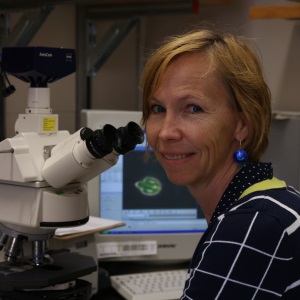
Professor Karin Rengefors, Lund University, Sweden

Professor Karin Rengefors, Lund University, Sweden
Karin Rengefors’ research interest is on understanding the processes underlying speciation and biogeography in phytoplankton. Her approach is to study these processes at the population level by investigating genetic diversity, population genetic and genomic structure, dispersal, and local adaptation. Her research group is currently focusing on three main systems; a dinoflagellate species complex that has recently diverged into multiple species/ecotypes, the freshwater invasive nuisance species Gonyostomum semen, and the toxin-producing cyanobacterium Microcystis.
| 13:30 - 14:00 |

Dr Colomban de Vargas, Station Biologique de Roscoff, France

Dr Colomban de Vargas, Station Biologique de Roscoff, FranceResearch Director at the CNRS France, and leader of the EPEP (Evolution of Pelagic Ecosystems & Protists) team at the Station Biologique de Roscoff, Colomban was awarded his PhD in molecular ecology and evolution in 2000 at the University of Geneva, Switzerland. He was then a post-doc at Harvard University, and an Assistant Professor at Rutgers University, USA. Colomban’s passion is to understand the co-evolution between eukaryotic Life and the Earth system. He has been studying: (i) the biodiversity and ecological biodiversication of protists; (ii) the physiogenomics and cell biology features of key marine protists, particularly from the plankton; (iii) the combination of (i) and (ii) into a systems ecology understanding of the world plankton, integrating across global organismal and spatio-temporal scales, including paleo-oceans. Colomban has led several international research programs on marine protists and plankton (BOOM, BioMarKs, UniEuk, Plankton Planet), and he is the Director of the international research federation ‘Tara Oceans’. |
|
|---|---|---|
| 14:15 - 14:45 |
Single-cell mitogenomics of heterotrophic flagellates
Most eukaryotic microbial diversity is uncultivated, under-studied, and lacks nuclear genome data. Mitochondrial sampling is more comprehensive, yet still groups that occupy important phylogenetic positions remain unexplored. Using photopigment exclusion and tubulin-specific fluorescence staining, the group sorted single-cell ‘heterotrophic’ flagellates directly from eastern North Pacific waters for genome sequencing. They recovered 206 single amplified genomes (SAGs) predominantly from under-represented protistan branches on the tree of life. 69 SAGs contained mitochondrial contigs including 21 unique complete, or near-complete, mitochondrial genomes from cryptic phylogenetic branches including telonemids, katablepharids and marine stramenopiles (MASTs). Collectively, these data point to a dynamic history of mitochondrial genome evolution including intron gain/loss, extensive patterns of genetic code variation, and complex patterns of convergent gene loss and endosymbiotic gene transfer. Surprisingly, mitochondrial coding content variation in heterotrophic stramenopiles resembles patterns previously only observed in plants. 
Dr Jeremy Wideman, Dalhousie University, Canada

Dr Jeremy Wideman, Dalhousie University, CanadaJeremy Wideman is an evolutionary cell biologist whose major research interest is understanding how eukaryotic cell complexity and diversity evolved. To do this he focuses on investigating how eukaryotic cell phenotypes have changed over evolutionary time using single-cell genomics, cell biological, and biochemical approaches. He is currently a postdoctoral fellow in the Department of Biochemistry and Molecular Biology at Dalhousie University, Halifax, Canada. |
|
| 15:00 - 15:30 | Tea | |
| 15:30 - 16:00 |
Understanding microbial interactions with eukaryotes at a single cell level
The Darby lab currently has a good understanding of how bacteria form partnerships with arthropods, but very little is known about eukaryotic microbes and their roles in arthropod biology. There are obviously exceptions as some parasites have been extensively studied, such as Plasmodium and Trypanosomes. However, these examples only represent the tip of the iceberg in terms of the possible diversity and interactions between microeukaryotes and arthropods. The main reason that we still don’t understand much about this microeukaryote diversity is that they are non-culture viable and are extremely rare in arthropod populations. Therefore, there is a need to develop high-throughput tools targeting microeukaryotes to describe their diversity in arthropods and to sequence their genomes so we can understand their functions. In this talk Alistair Darby will give examples of how harassing cell generics can be used to describe diversity and function, but also highlight some of the challenges still to be solved in studying these systems. 
Dr Alistair Darby, University of Liverpool, UK

Dr Alistair Darby, University of Liverpool, UKAlistair is a genome scientist with research interests in the symbionts and pathogens of arthropod pests and disease vectors. From his PhD to present he has worked on non-culture viable microbes and used molecular/genomic approaches to describe and understand the biology of interactions between the host arthropod and the microbial partner. He is Co-Director at the Centre for Genomics Research, University of Liverpool, where he heads the single cell sequencing lab. |
|
| 16:15 - 18:00 | Poster session |
Chair
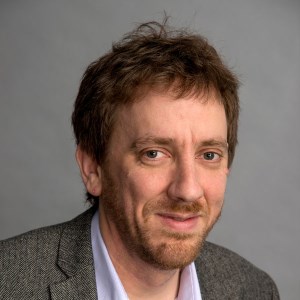
Professor Neil Hall, Earlham Institute, UK

Professor Neil Hall, Earlham Institute, UK
Neil Hall has been working in genomics for over 15 years. He has previously led research groups at the Sanger Institute, The Institute for Genomic Research, and The University of Liverpool. His research focusses on comparative and evolutionary genomics in pathogens (particularly parasitic protists) to understand the molecular basis of important phenotypes such as virulence and host specificity. His group also apply genomics to the analysis of microbial communities in order to understand how they may influence health or respond to changing environments.
| 09:00 - 09:30 |
Shaping the environment for single microorganisms
Variability between individual microorganisms is driven by both internal factors, such as phenotypic heterogeneity, and external factors, through spatially and temporally stochastic interactions with the environment. As new methods are developed to measure the responses of single cells, it is of equal importance to have flexible and accurate approaches to experimentally manipulate the environment at the single-cell level, in order to mimic or isolate components of their natural habitat. This involves challenges in controlling the chemical composition, temporal dynamics, and spatial distributions at the scale of individual cells. Vicente Fernandez will present new approaches combining microfluidics and image analysis for recreating interactions between bacteria and phytoplankton from aquatic environments, and for further simplifying these interactions to study the behavioural and growth responses of hundreds to thousands of single cells in parallel. These approaches unlock the possibility of understanding and quantifying fundamental marine processes from the perspective of the individual microorganisms that drive them. 
Dr Vicente Fernandez, ETH Zürich, Switzerland

Dr Vicente Fernandez, ETH Zürich, SwitzerlandVicente Fernandez is a senior researcher with Professor Roman Stocker in the environmental microfluidics group at ETH Zürich. He has studied engineering and fluid mechanics, completing a PhD in ocean engineering (MIT/WHOI Joint Program, 2011). Since 2012, when first joining the Stocker group, Dr Fernandez has studied the interactions of marine microbes with other microbes and the environment, covering a range of topics including coral, phycospheres, and oil biodegradation. His interdisciplinary research recreates or isolates microscale realisations of a microbial interaction with the aid of microfluidics, allowing for a careful characterisation of the phenomenon at the level of individual cell behaviour. These characterisations are then extended via biophysics and stochastic models to study the full environmental impact of single-cell behaviours. Complementing his passion for environmental science, he is also interested in depicting microscale environments for general audiences through scientific art and photography. |
|
|---|---|---|
| 09:45 - 10:15 |
Exploring deep opisthokont evolution through single-cell approaches
Opisthokonts were early recognised as one of the major eukaryotic super-groups based on molecular phylogenetic analyses. They cluster in two major lineages, the Holomycota and the Holozoa, which encompass well known multicellular organisms, respectively Fungi and Metazoa, together with a cohort of unicellular relatives. Phylogenetic and functional analyses have shown that many genes typically involved in metazoan multicellularity were already present in the unicellular relatives of animals. On the holomycotan branch, the situation is complex because the boundaries defining Fungi are fuzzy and, at the same time, environmental 18S rRNA metabarcoding combined with more classical taxonomic studies have revealed a wide diversity of previously unrecognized lineages branching deeply within classical Fungi (osmotrophic lineages, including chytrids) and prior to their divergence (eg, aphelids, rozellids or cryptomycotes, microsporidians, nucleariids). Many of these lineages encompass uncultured species for which gaining information is challenging. Single-cell genomic and transcriptomic approaches offer a suitable solution to fill gaps on our knowledge about early-branching holomycotan lineages. Purificacion Lopez-Garcia will present ongoing studies of her lab to obtain phylogenomic and gene content data with the aim of unraveling hallmark evolutionary processes leading to the evolution of fungi. 
Dr Purificacion Lopez-Garcia, CNRS - Université Paris-Sud, France

Dr Purificacion Lopez-Garcia, CNRS - Université Paris-Sud, FrancePurificacion Lopez-Garcia is a biologist with broad interests on microbial evolution and early life history. She obtained a PhD at the Universidad Autonoma de Madrid, Spain, and worked in several French and Spanish universities before permanently joining the Centre National de la Recherche Scientifique (CNRS) in 2002. She is now a CNRS Research Director and leads a team in the unit Ecologie Systematique Evolution at the Université Paris-Sud, France. Her research focuses on the study of the diversity, ecology and evolution of prokaryotes (bacteria, archaea) and microbial eukaryotes using metabarcoding, metagenomic and single-cell approaches in various, including extreme, ecosystems. She is an associated member of the Académie Royale des Sciences et des Arts (Belgium) and was awarded the CNRS Silver Medal in 2017. She is a member of the ITN SINGEK consortium. |
|
| 10:30 - 11:00 | Coffee | |
| 11:00 - 11:30 |

Dr Adam Monier, Living Systems Institute, University of Exeter, UK

Dr Adam Monier, Living Systems Institute, University of Exeter, UKAdam Monier is a marine microbiologist interested in the ecology and evolution of microbial eukaryotes and associated viruses, and their interplay in oceans. Adam received his MSc and PhD in Bioinformatics from Aix-Marseille Université, France, followed by postdoctoral research in the labs of Professor Alexandra Z Worden (MBARI, CA, USA) and Professor Connie Lovejoy (Université Laval, QC, Canada). In 2014, Adam was awarded a Royal Society Newton Fellowship to work with Professor Tom Richards, at the University of Exeter, on the impact of horizontal gene transfer events in phytoplankton-virus interactions. Since 2018, he has been a Senior Research Fellow and a Royal Society University Research Fellow at the Living Systems Institute (University of Exeter) where his group uses ‘omics’ tools to determine the influence of viral infection on phytoplankton physiology, and its repercussions on marine ecosystems. |
|
| 11:45 - 12:15 |
Single-cell approaches for investigating planktonic archaea
Though archaea have been known in the marine water column for nearly 30 years, many questions remain about their ecology, physiology, and interactions with other members of the microbial community. In particular, the interactions between archaea and eukaryotic plankton are poorly understood. Indeed, aside from the well-known relationship between methanogenic archaea and their ciliate hosts in anaerobic environments, no archaeal symbionts of eukaryotes have been identified. To investigate this, over 400 individual protist cells were isolated using fluorescence-activated cell sorting, genome amplified, and screened for the presence of associated archaea. Despite the identification of multiple protist-bacteria associations, no archaeal-eukaryote relationships were identified. Single-cell amplified genomes (SAGs) of archaeal cells, however, have revealed interesting biogeographic differences in different oceanic regions. Further discussed is the growing availability of metagenome-assembled genomes (MAGs) for planktonic archaea and the relative utility of MAGs versus SAGs for understanding archaeal biogeography and physiology. 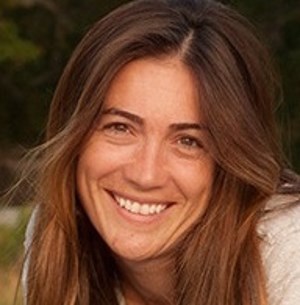
Dr Alyson Santoro, University of California, Santa Barbara, USA

Dr Alyson Santoro, University of California, Santa Barbara, USADr Alyson Santoro is an Assistant Professor in the Department of Ecology, Evolution and Marine Biology at the University of California, Santa Barbara. Alyson’s research focuses on microbes involved in nutrient cycling in the ocean, especially of the element nitrogen. She is interested in cultivating new microbes and discovering novel ways of tracking their activity. This research combines laboratory experiments with field observations, and to date has used genomics, transcriptomics, proteomics and stable isotope geochemistry as tools to uncover the activity of microbes in the mesopelagic ocean. A particular focus of the lab is the marine archaea, a largely uncultured group of microbes. Findings from their recent research include the discovery that archaea in the ocean can make the greenhouse gas nitrous oxide, and that some marine archaea have exceptionally small genomes. Alyson received her PhD in Environmental Engineering at Stanford University and completed a postdoctoral fellowship at Woods Hole Oceanographic Institution. |
Chair
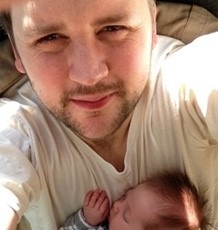
Professor Tom Richards, University of Exeter, UK

Professor Tom Richards, University of Exeter, UK
Tom Richards is an evolutionary biologist who works on the rise and diversification of the eukaryotes. His work focuses on the use of environmental DNA methods to understand the diversity of eukaryotic microbes in natural environments and how they fit on to the tree of life. He also works on trying to understand the evolutionary processes that have driven the diversification of the eukaryotic form such as endosymbiosis and horizontal gene transfer.
| 13:30 - 14:00 |
Improving the read accuracy of Oxford Nanopore Technology sequencers to enable the high-throughput analysis of isoform-level single cell transcriptomes
Christopher Vollmers has previously shown that Oxford Nanopore Technology (ONT) cDNA sequencing can uncover transcript isoform diversity in single cells in unprecedented detail. Now, his group has developed a new method to increase the accuracy of cDNA reads generated by the ONT MinION. These more accurate reads can be used to demultiplex high-throughput single cell cDNA libraries and identify base-accurate full-length transcript isoforms. Further, his group has benchmarked this new method by analysing a cDNA pool of 96 B cells and found isoform diversity with potential implications for cancer treatment. 
Dr Christopher Vollmers, University of California Santa Cruz, USA

Dr Christopher Vollmers, University of California Santa Cruz, USAChristopher Vollmers graduated with an MS in Biomedical Sciences from the University of Wuerzburg, Germany. He then pursued his PhD through a shared program between the University of Heidelberg, Germany, and the Salk Institute for Biological Studies in La Jolla, CA. After graduating, Christopher joined the lab of Stephen Quake at Stanford University as a postdoctoral fellow. In the Quake lab, he worked on developing genomic tools to analyse B cells on population and single cell levels. Christopher now continues this work in his own lab which he started in 2014 in the Biomolecular Engineering Department at University of California Santa Cruz. |
|
|---|---|---|
| 14:15 - 14:45 |
Early metazoan cell type diversity and regulation by single-cell RNA-seq analysis
A fundamental characteristic of animals is their ability to form large cell populations that are capable of cooperating through interaction between different archetypical functional programs, which are sometimes called cell types. The deployment and maintenance of these cell type-specific transcriptional programs is coordinated by transcription factor regulatory networks. However, the phylogenetic relationships and evolutionary dynamics underlying cell type hierarchies and their regulation are poorly understood. To gain insights into this question Arnau’s group profiled thousands of single-cell transcriptomes in the cnidarian Nematostella vectensis and other early-branching animals. The resulting whole-organism cell type classification atlases reveal an unanticipated high diversity of cell types in some of these species, particularly neuronal types. Moreover, the group identifies the gene modules specific to these cell behaviours, as well as the master transcription factors regulating them at different levels of the cell type hierarchy. These results provide the first glimpses to early-multicellular cell type complexity and the regulatory principles that orchestrate it. 
Dr Arnau Sebé-Pedrós, Weizmann Institute of Science, Israel

Dr Arnau Sebé-Pedrós, Weizmann Institute of Science, IsraelDr Arnau Sebé-Pedrós is an evolutionary biologist interested in how genome sequence and its regulation translate into specific cellular phenotypes; and how this genotype-phenotype link evolves. He obtained his PhD in Genetics at the University of Barcelona with Professor Iñaki Ruiz-Trillo, working on the origins of animal multicellularity from a comparative genomics and epigenomics perspective. Currently, he is a postdoctoral fellow at Weizmann Institute of Science, in the lab of Professor Amos Tanay. There, he applies single-cell genomics and chromatin analysis tools to understand the early evolution of animal cell types and genome regulatory mechanisms. |
|
| 15:00 - 15:30 | Tea | |
| 15:30 - 16:00 |
Single cell multi-omics: multiple measurements from single cells
The ability to analyse the genomes, epigenomes and transcriptomes of individual cells has offered a new way in which to explore cellular heterogeneity in a diverse array of living systems. The Macaulay group has focussed on the development of technologies that enable us to explore, in parallel, multiple omic parameters of single cells – enabling combined gene expression and genome sequencing from the same cell. Another major focus of the group's work in this area is the understanding of alternative splicing in individual cells using long-read sequencing. In this talk Iain Macaulay will give an overview of the group’s approaches, how they aim to apply them in a wide array of applications across mammalian, plant and microbial biology. 
Dr Iain Macaulay, Earlham Institute, UK

Dr Iain Macaulay, Earlham Institute, UKIain Macaulay obtained his PhD from the Department of Haematology at the University of Cambridge and subsequently worked at University College Dublin, Oxford University and finally the Sanger Institute before establishing his own group at the Earlham Institute in 2016. His main research interest is on the development, adaptation and application of single cell technologies to support the study of a wide range of biological systems. |
|
| 16:15 - 17:00 | Panel discussion/overview |
